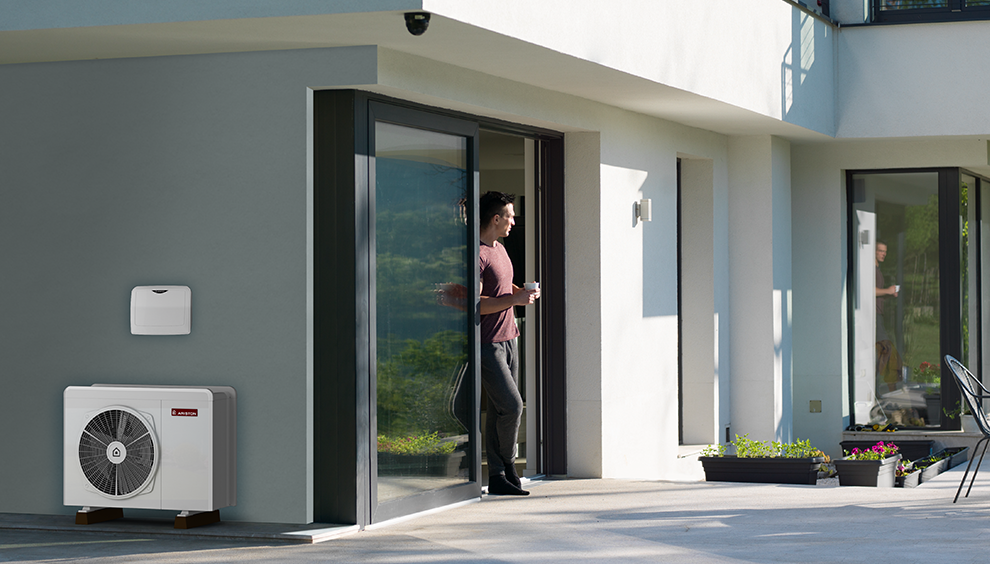We’re Dreaming of a Green Christmas!
Christmas for many in the UK is a time of indulgence, abundance and excess but each year the celebration has a huge impact on the environment. At Ariston we believe in sustainable comfort and while we don’t want to be all “bah humbug” about our Christmas culture we think many of our festive excesses will need to change over the coming years if we are committed about slowing climate change.
The Environmental Impact of Christmas
At Christmas everything seems to head into overdrive with extra travel, extra eating, extra energy consumption and extra consumption of goods.
A 2018 Business Leader article reports the following frightening statistics:
- We use 125,000 tonnes of plastic packaging for gifts with an astonishing amount ending up in our oceans.
- Combined, we travel 6 billion miles around the UK to see friends and family.
- We send enough Christmas cards that if we placed them alongside each other, they’d cover the world’s circumference 500 times.
- Per 1kg of wrapping paper, 3.5kg of CO2 is emitted for its production. Times that by the 227,000 tonnes we use yearly, and that’s outrageously contributing to our ever-growing carbon emissions.
- Our love of lights at Christmas aren’t just damaging for electricity use, it can cause confusion for the wildlife who struggle with the sudden illuminations.
- The average Brit spends over £40 in wasted food. Collectively, we bin 230,000 tonnes of unneeded Christmas treats. The equivalent to 74 million mince pies or 2 million turkeys.
- By March 41% of toys will have broken or our children will be bored of them, most of which will go straight to the tip.
Small Changes for a Big Collective Difference
So how can we make a difference? We’ve collated the following tips to help enjoy Christmas while reducing our environmental impact. As the above stats show, it’s the sheer scale of the consumption which makes the festive season such a negative for the environment so what might seem a small change can make a big difference as more households opt for a green Christmas.
A Sustainable Christmas in the Home
Christmas decorations are another area where we can do more to help the planet:
- Try and buy quality decorations that you can keep and re-use year after year. Not only does this lessen the impact on the environment but it saves time and many decorations can become a key part of a family’s festive traditions.
- If you need to freshen up the decorations this year then why not make your own? If you have access to a garden you could make your own garland with clippings of leaves, twigs and berries. There are also lots of creative crafts that you can enjoy with the family that use recycled materials. Need some inspiration? Check out this list of 20 Christmas Crafts featuring recycled items!
- Go LED with the lights. If you need new lights this Christmas then try and opt for LED ones which will use less energy. Many lights come with in-built timers but if yours don’t then be sure to switch them off when you head to bed. Not only does it save energy but it’s safer, reducing the chance of an electrical fire.
- Make sure your tree is green! If you’re buying an artificial tree then you should plan to reuse it year-after-year for ideally 10 years. Otherwise, you may be best buying a real one that is responsibly sourced and FSC certified. You could also try a potted tree which you can move out into the garden after Christmas and reuse again next year. Again, saving money and the environment.
Make Christmas Dinner a Sustainable Winner
As the scary stats above showed, our excessive eating and drinking over Christmas has a huge impact on the environment. Why not consider the following this year:- Food production is a huge contributor to air and water pollution, the loss of wildlife and of natural habitats through deforestation and intensive fishing. For this reason alone it is well worth trying to reduce the amount of food we waste at Christmas. Try to be realistic with the Christmas “Big Shop” and only buy what you’ll need by planning set meals and working out quantities beforehand.
- Livestock farming to satisfy our appetite for meat consumption is another big contributor of greenhouse gases. Why not swap at least one meal over the Christmas period to a vegetarian or vegan version? Check out these Vegetarian Christmas Recipes from BBC Good Food for some delicious festive feasts that are good for the planet.
- Keep it local and seasonal. By being mindful to try and only buy foods that have been grown or sourced locally you’ll be minimising the about of miles your Christmas Dinner has had to travel. Similarly, by sticking to foods that are seasonal you’ll know that it’s taken less energy to produce what’s on your plate. For more info on eating seasonally check out www.eattheseasons.co.uk
- Watch out for those Crackers! Unfortunately, most Christmas Crackers available are difficult to recycle. The foil or glittery card outer, ribbons and cheap novelty toys are all hard to recycle. Try and shop around to find ones that are more environmentally friendly or even better, try making your own with more relevant personal gifts inside.
How to Give Green
It’s great to give at Christmas but it’s even better to give knowing that you’ve helped the environment at the same time:- We have all received presents at Christmas which were unwanted. Think quality over quantity this year and give less novelty presents and opt for a single quality present instead that a loved one needs and will really appreciate.
- Shop with an eye for sustainability. Is what you’re buying going to last, is it made from recycled material? Packaging is a major waste area at Christmas and so try to avoid products with excess packaging, especially single use plastic which can’t be recycled. It’s also worth considering second hand and vintage items which not only help the environment but can be kinder to your Christmas budget too.
- Wrap simply. Try to use less wrapping paper and ensure that what you buy is made from recycled paper and can easily be recycled again, avoiding overly decorative paper containing foil and glitter. Save time and the environment and ditch the ribbons and bows this year too. You could also try cloth wrapping which means you can re-use the same fabric year after year.





